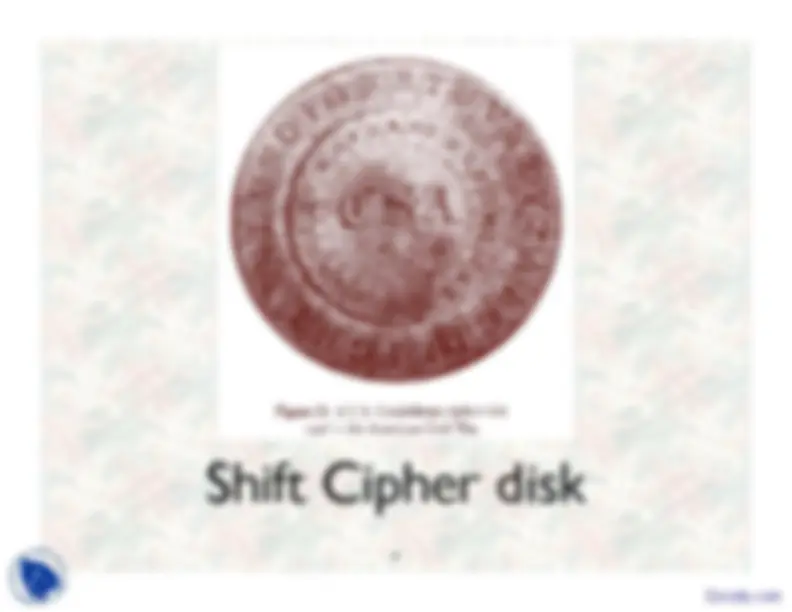

























Study with the several resources on Docsity

Earn points by helping other students or get them with a premium plan


Prepare for your exams
Study with the several resources on Docsity

Earn points to download
Earn points by helping other students or get them with a premium plan
Community
Ask the community for help and clear up your study doubts
Discover the best universities in your country according to Docsity users
Free resources
Download our free guides on studying techniques, anxiety management strategies, and thesis advice from Docsity tutors
Some concept of Cryptography are Block Ciphers, Classical Cryptography, Computational, Cryptanalysis, Digital Signatures, Knowledge Proofs, Number Theory, One Way Functions, Perfect Secrecy, Perfect Secrecy. Main points of this lecture are: Classical Cryptography, Classical Cryptosystem, Possible Plaintexts, Possible Ciphertexts, Encryption Rules, Decryption Rules, Plaintext Blocks, Ciphertext String, Shift Cipher Disk, Prime Factor
Typology: Slides
1 / 31

This page cannot be seen from the preview
Don't miss anything!
























2
(P , C , K , E , D ) satisfying
4
5
Letters are identified with numbers: A=0, B=1, .... , Z= Z 26 P = C = K = Z 26 eK ( x ) = ( x + K ) mod 26 dK ( y ) = ( y − K ) mod 26
7
8
Taking any group G (even non-commutative) can generalize shift cipher by using G ’s “addition” rule:
10
11
DEF: The ring is the set with addition and multiplication taken mod m. LEMMA: x is invertible in iff gcd(x, m) = 1. COR: is a field iff m is prime. DEF:. In other words, is the number of elements in which are relatively prime to m.
!( m ) = |Z ∗ m | Z m !( m ) Z m { 0 , 1 ,... , m − 1 } Z m Z m
13
Can define a general cipher over any ring, even non-commutative rings (where multiplication non-commutative, but addition commutative).
14
Shift and Affine cipher have limited key spaces. Better to use all possible permutations of :
16
THM: Let A be a square matrix whose entries are in. A is invertible modulo m iff det( A ) is invertible in. Furthermore the inverse of A mod- m is given by where is the inverse of A over.
17
19
**>> A = [ [21 10] ; [18 5] ];
d = det(A) d = - [g, e, t] = gcd(d,26) g = 1 e = 9 t = 26 B = A^- B = -0.0667 0. 0.2400 -0. B = Bde B = 45.0000 -90. -162.0000 189. B = round(B) B = 45 - -162 189 B = mod(B,26) B = 19 14 20 7 C = AB C = 599 364 442 287 mod(C,26) ans = 1 0 0 1*
20